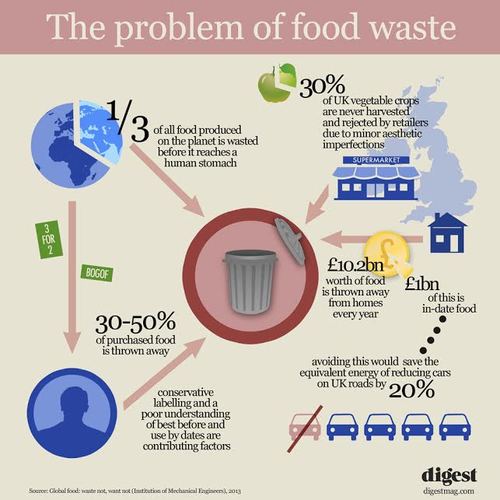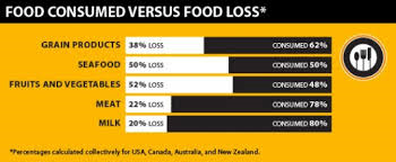 Raley’s grocery chain in California and Nevada is taking a leap of faith and creating a section devoted to produce seconds that otherwise would overload a landfill or wasted in some other way. “Imperfect” an outlet for produce rejects has just brokered a deal with high-end chain Raley's, which has more than 100 stores in California and Nevada. The chain says it will launch a pilot program, "Real Good" produce, in 10 Northern California stores in mid-July. Why is so much good food being thrown away? One example of why some produce does not reach the table is described by representative of Ocean Mist Farms in Salinas Valley, California. Cauliflower in the store is usually white—it’s what we are used to seeing. But as it turns out white is not the color of the average cauliflower. Art Barrientos pointed out that many have a yellow tinge. “This is not marketable,” he said in a report by NPR. The yellow tint comes from sun exposure, but is just as good and nutritious as white cauliflower. The market demands white, blemish-free, perfectly sized heads of cauliflower. The rejects are plowed under, he says. The story is the same at HMC Farms in Kingsbury, California where broccoli and peaches are grown, and 35 percent of the crops never make it to the grocery store. Instead, it’s used as cattle feed. Food waste is among the biggest contributors to landfills in the US which creates another problem: "When [food] rots, it emits methane, which is a very potent greenhouse gas." Food waste is responsible for a significant portion of methane emissions, according to the NRDC. Some farming operations are sending rejected produce to food banks, but one of the problems for farmers is a low cost delivery supply line mechanism that encourages them to donate to food banks. It’s difficult to recruit farmers to join those donating, for only three out of 25 growers of broccoli and cauliflower in California participate in distributing to food banks, but there are other possibilities that could increase the incentive for some farmers concerned with profitability of produce. It’s easier and cheaper for them to throw away the rejects. To encourage more farmers to participate there needs to be an economic incentive, according to HMC Farms representative.  California offers tax breaks for donating to food banks and is one of only six states currently offering tax breaks for donating rejects. While food banks are a thriving alternative for excess produce, there are enough rejects to supply alternative economic distribution concepts including Raley’s “Real Good” produce section launching in July. In fact if the Raley’s model is successful, it could be the genesis for a new farming business model focusing on improving supply line collaborations and connections from farm to distribution mechanisms increasing profits. Food banks, however, will continue to be the life line for the poor and disadvantaged. Paul Ash, executive director of the California Farm to Family food bank program, said they have distributed over 70 million pounds of produce this year and expect to grow in the future, and expand the program to other states. Related at NEWTEKWORLDNEWS: Billions worth of food thrown away annually Resources http://www.nrdc.org/food/files/wasted-food-ip.pdf http://www.npr.org/sections/thesalt/2015/06/17/414986650/to-tackle-food-waste-big-grocery-chain-will-sell-produce-rejects
0 Comments
Leave a Reply. |
Dava Castillo
is retired and lives in Clearlake, California. She has three grown
children and one grandson and a Bachelor’s degree in Health Services
Administration from St. Mary’s College in Moraga California. On the
home front Dava enjoys time with her family, reading, gardening, cooking
and sewing. Archives
November 2015
|


